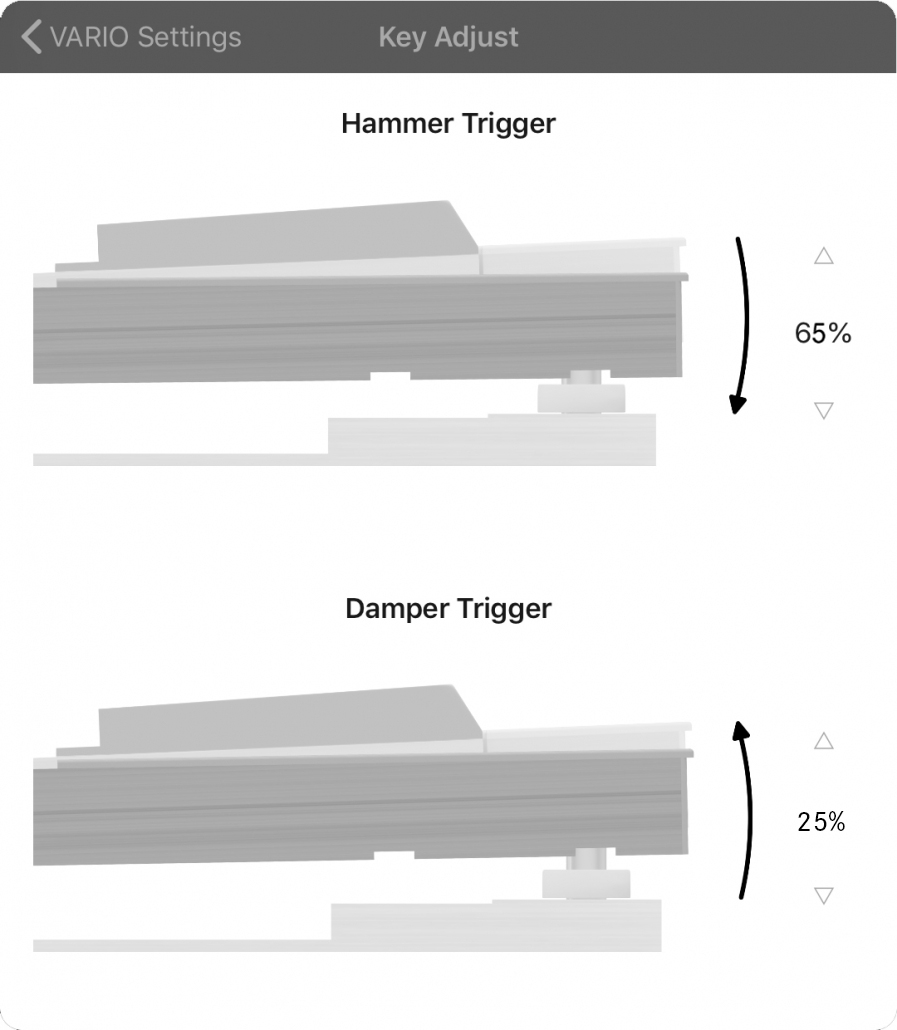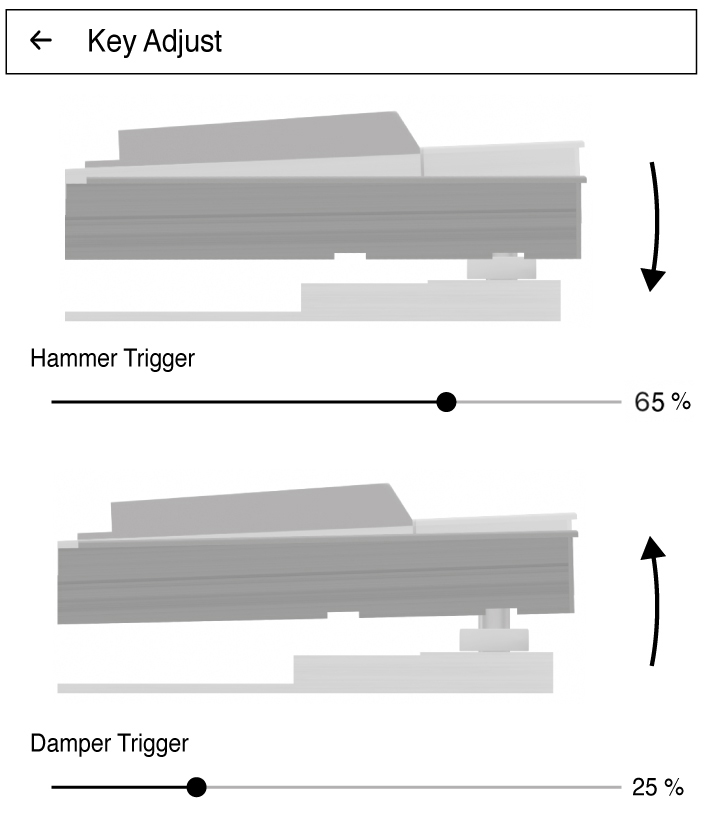To translate the key movement into a digital signal, your VARIO digital system takes the distance that a key passes over a certain section of the path into account. This range can be adjusted for both downward and upward movement.
For downward movement, the point (the depth) at which the calculation is to be completed and a note ( in the MIDI protocol) is triggered will be defined first.
After a calibration and/or adjustment of the sensor brightness you should check the adjustment of the keys. The value for the hammer trigger has usually a directly noticeable influence on the keyboard’s response.
- In the VARIO app, go to the Settings -> Key Adjustment section.
- Change the %-values by tapping on the arrows.
- Larger value changes can be made by moving the key graphic up and down.
- The parameters are applied in real-time, so you can check the effect of a change directly while playing.
Tips and advice
- If the value of the hammer release is too high (on many keyboards this means about 40% or less) you need more force when playing to achieve a tonal result in the forte / fortissimo range.
- On the other hand, if the value of the hammer release is very low (about 70% or more) you might reach the forte too fast – adjust it back.
- The damper release has an effect on the ability to retrigger. If both values – hammer and damper – are too far apart, the key may have to fall back too far to trigger again. For many instruments a distance of about 15-20% has proven to be optimal.
- Many users find a value of 60-65% to be the optimum value for hammer triggering.
The settings for hammer and damper trigger should therefore be interpreted as a kind of frame in whose boundaries you can then adjust the settings to your desired dynamic behavior of the keyboard.
Note that dynamic fine-tuning is performed in a later step using the DYNAMICS block.
To translate the key movement into a digital signal, your VARIO digital system takes the distance that a key passes over a certain section of the path into account. This range can be adjusted for both downward and upward movement.
For downward movement, the point (the depth) at which the calculation is to be completed and a note ( in the MIDI protocol) is triggered will be defined first.
After a calibration and/or adjustment of the sensor brightness you should check the adjustment of the keys. The value for the hammer trigger has usually a directly noticeable influence on the keyboard’s response.
- In the VARIO app, go to the Settings -> Key Adjustment section.
- Change the %-values by tapping on the arrows.
- Larger value changes can be made by moving the key graphic up and down.
- The parameters are applied in real-time, so you can check the effect of a change directly while playing.
Tips and advice
- If the value of the hammer release is too high (on many keyboards this means about 40% or less) you need more force when playing to achieve a tonal result in the forte / fortissimo range.
- On the other hand, if the value of the hammer release is very low (about 70% or more) you might reach the forte too fast – adjust it back.
- The damper release has an effect on the ability to retrigger. If both values – hammer and damper – are too far apart, the key may have to fall back too far to trigger again. For many instruments a distance of about 15-20% has proven to be optimal.
- Many users find a value of 60-65% to be the optimum value for hammer triggering.
The settings for hammer and damper trigger should therefore be interpreted as a kind of frame in whose boundaries you can then adjust the settings to your desired dynamic behavior of the keyboard.
Note that dynamic fine-tuning is performed in a later step using the DYNAMICS block.


